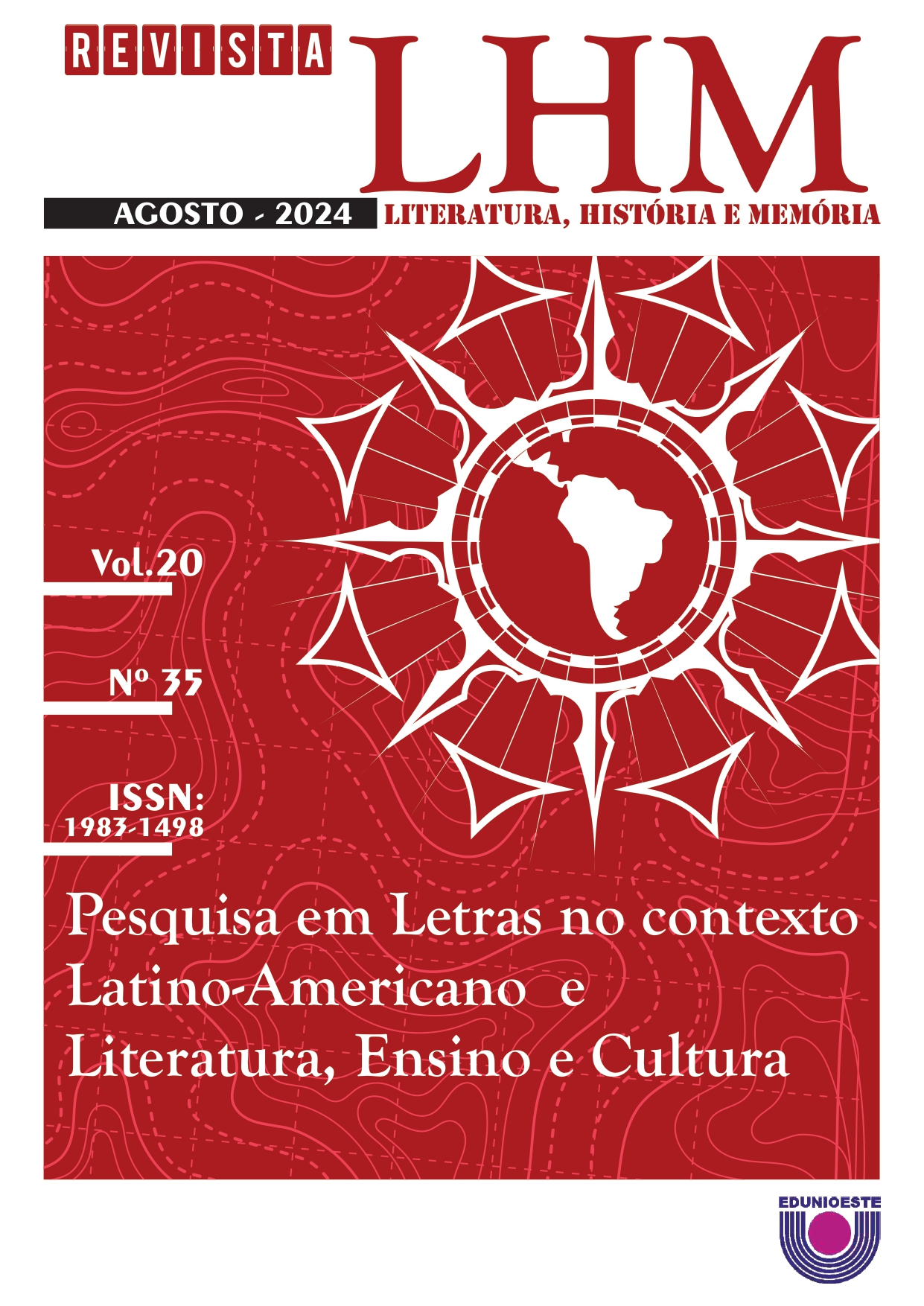As representações de negritude e religiões de matrizes africanas em O círio negro (2015), de Olívia Sarmento
DOI:
https://doi.org/10.48075/rlhm.v20i35.33342Resumo
O presente artigo tem como corpus o conto O Círio Negro (2015), da mineira Olívia Sarmento. O objetivo é analisar a construção da representação das religiões de matriz africana, privilegiando a Umbanda, por meio do imaginário social e o processo de Outremização da negritude brasileira presente no corpus. Como fundamentação teórica, o artigo será norteado pelos estudos de Hanciau (2002), Molar (2009) e Munanga (2009), acerca da negritude brasileira; por Araújo (2006), Bosi (1980), (2002), Candido (2009), Coutinho (1955) e Souza (2013) pelos posicionamentos teóricos acerca do regionalismo literário; e por Verger (2012), nos estudos dirigidos sobre os cultos africanos e voduns. Como considerações finais, aponta-se que o conto reflete a realidade das províncias brasileiras do período, onde os grandes senhores de fazenda possuíam carnalmente as suas escravizadas como demonstração de poder.
Downloads
Publicado
Como Citar
Edição
Seção
Licença

Este trabalho está licenciado sob uma licença Creative Commons Attribution-NonCommercial-ShareAlike 4.0 International License.
Aviso de Direito Autoral Creative Commons
Política para Periódicos de Acesso Livre
Autores que publicam nesta revista concordam com os seguintes termos:
1. Autores mantém os direitos autorais e concedem à revista o direito de primeira publicação, com o trabalho simultaneamente licenciado sob a Licença Creative Commons Attribution que permite o compartilhamento do trabalho com reconhecimento da autoria e publicação inicial nesta revista.2. Autores têm autorização para assumir contratos adicionais separadamente, para distribuição não-exclusiva da versão do trabalho publicada nesta revista (ex.: publicar em repositório institucional ou como capítulo de livro), com reconhecimento de autoria e publicação inicial nesta revista.
3. Autores têm permissão e são estimulados a publicar e distribuir seu trabalho online (ex.: em repositórios institucionais ou na sua página pessoal) a qualquer ponto antes ou durante o processo editorial, já que isso pode gerar alterações produtivas, bem como aumentar o impacto e a citação do trabalho publicado (Veja O Efeito do Acesso Livre).
Licença Creative Commons
Esta obra está licenciada com uma Licença Creative Commons Atribuição-NãoComercial-CompartilhaIgual 4.0 Internacional, o que permite compartilhar, copiar, distribuir, exibir, reproduzir, a totalidade ou partes desde que não tenha objetivo comercial e sejam citados os autores e a fonte.


